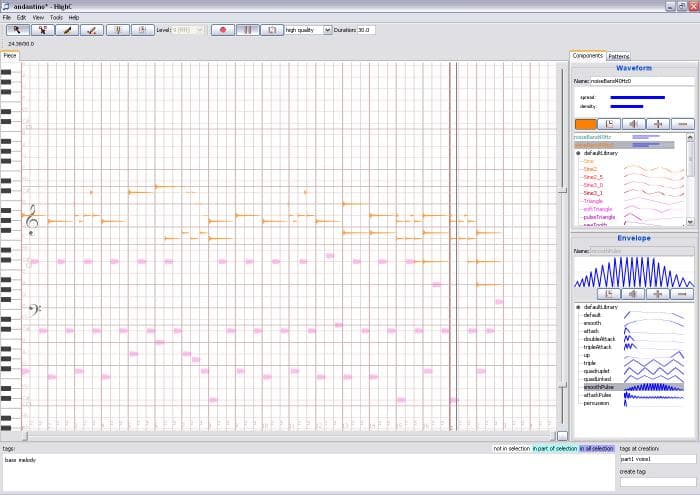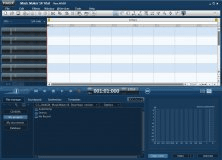

Thus, by rendering parametric scores for performers, the notational gap is reduced, and in compositional terms this means more connection between the sonic ideas and their performativity. In general, electronic instrument notation is essentially parametric. At heart, this graphical interface attempts to bridge instrumental and electronic notation. This project is primarily meant for mixed media, but it can easily be used for acousmatic music. However, the graphical environment can be edited automatically or generated in realtime, either by constructing the algorithmia from within Pd, or by sending values via TCP/IP from other programs (e.g., Supercollider, MaxMSP, etc.) Furthermore, scores can be edited and stored for further use, for example, as in a generation of a database of scores which can be read in different orders or combinations.
#Highc music software software
This is to say that the composer can edit with the cursor each element, as lines or dots on a graphical canvas, like in other traditional graphic notation software (i.e., HighC).
#Highc music software manual
This allows for both manual and automatic editing. This system relies on Pure Data’s “data structures” for its graphical interface. I propose a system of graphic notation for both instrument and electronics with the capability to combine realtime and non-realtime composition. Using Pure Data’s “data structures,” combined with networked computers, this project reduced not only the notational gap between instruments and electronics, but also brings forth realtime composition based in audio feature extraction. Primarily intended for mixed media, this project attempts to bridge instrumental and electronic notation. I use this all the time to make sound designs.Scorify Scorify: Live score generation for instruments and electronics. I realize that this could get quite messy visually, so perhaps it would be better to only display a few of the loudest harmonics and leave the residual sound (minus those harmonics) as the line.Īlso, it might be helpful to have a small spectrogram display (perhaps vertically so as to match the piano keyboard conceptually) during playback.Īwesome software, by the way! I used to use the UPIC a lot back in the day, and was quite happy to find a software-only tool that could do the same (and much more-this absolutely beats the UPIC without question). And if the harmonics could then be edited that would be amazing.

It would be really helpful if there were a way in which samples could be loaded that they were instead displayed as a set of (parallel) lines indicating the harmonics-I think that would better tie the sampled sounds in with the synthesized ones visually and conceptually.

I really like the way that samples can be used in addition to the synthetic sound sources, but it frustrates me that they are shown as nondescript lines.


 0 kommentar(er)
0 kommentar(er)
